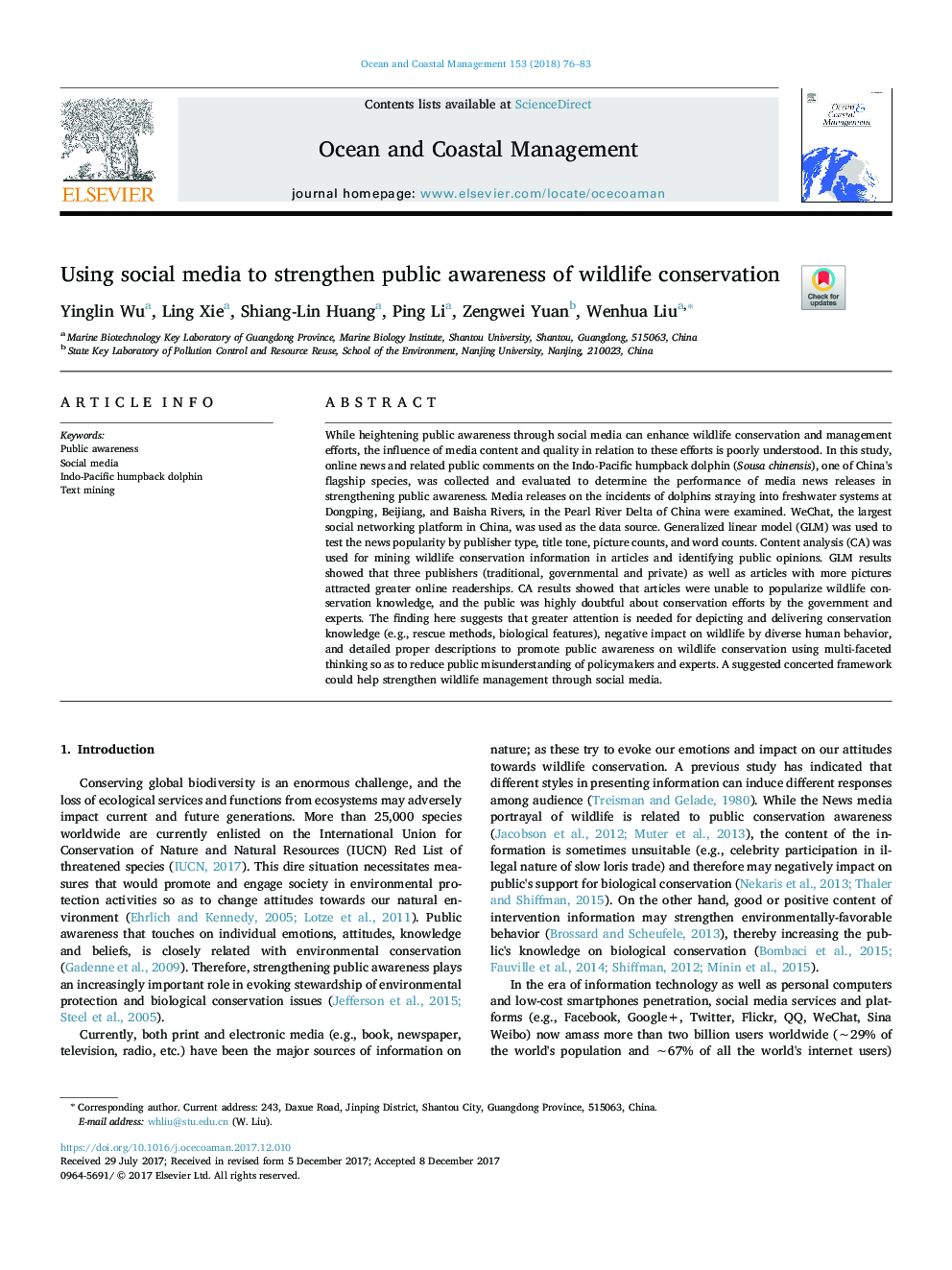| Article ID | Journal | Published Year | Pages | File Type |
|---|---|---|---|---|
| 8060836 | Ocean & Coastal Management | 2018 | 8 Pages |
Abstract
While heightening public awareness through social media can enhance wildlife conservation and management efforts, the influence of media content and quality in relation to these efforts is poorly understood. In this study, online news and related public comments on the Indo-Pacific humpback dolphin (Sousa chinensis), one of China's flagship species, was collected and evaluated to determine the performance of media news releases in strengthening public awareness. Media releases on the incidents of dolphins straying into freshwater systems at Dongping, Beijiang, and Baisha Rivers, in the Pearl River Delta of China were examined. WeChat, the largest social networking platform in China, was used as the data source. Generalized linear model (GLM) was used to test the news popularity by publisher type, title tone, picture counts, and word counts. Content analysis (CA) was used for mining wildlife conservation information in articles and identifying public opinions. GLM results showed that three publishers (traditional, governmental and private) as well as articles with more pictures attracted greater online readerships. CA results showed that articles were unable to popularize wildlife conservation knowledge, and the public was highly doubtful about conservation efforts by the government and experts. The finding here suggests that greater attention is needed for depicting and delivering conservation knowledge (e.g., rescue methods, biological features), negative impact on wildlife by diverse human behavior, and detailed proper descriptions to promote public awareness on wildlife conservation using multi-faceted thinking so as to reduce public misunderstanding of policymakers and experts. A suggested concerted framework could help strengthen wildlife management through social media.
Related Topics
Physical Sciences and Engineering
Earth and Planetary Sciences
Oceanography
Authors
Yinglin Wu, Ling Xie, Shiang-Lin Huang, Ping Li, Zengwei Yuan, Wenhua Liu,
